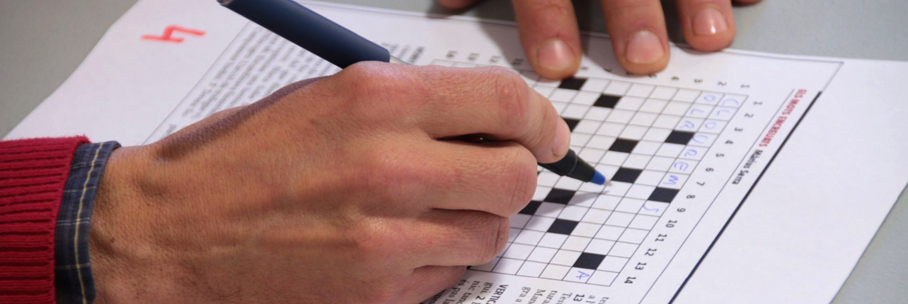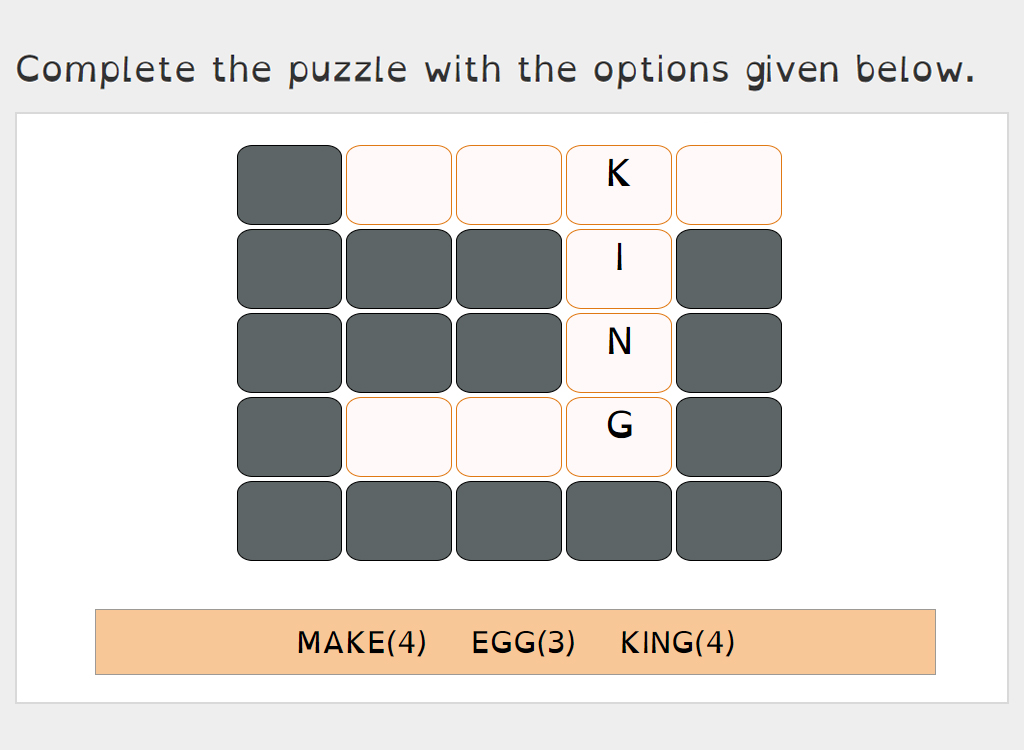Crossword Puzzle 1

This is a special type of crossword puzzle where the answers are given! The challenge is to fit the answers into the boxes. This is an exercise in recognizing patterns. This is a good visualization activity. Pattern recognition is an important activity for learning any subject.
There are patterns in maths, in grammar, in science and in almost everything we do and the things in nature. There are patterns in dance, music, in movements of planets, in high tide and low tide in the sea, in birds flying in groups,etc.
While teaching maths or grammar ask your child what is the pattern here? If the child can see the pattern then maths becomes easy for the child. When doing puzzles both the sides of our brain- left brain and right brain- are active. Doing puzzles is whole brain learning.
We can increase our ability to learn if we can understand the pattern. Recognizing patterns is a sign of intelligence. That’s why many competitive examinations have questions based on patterns. Almost all the ‘reasoning tests’ are based on pattern recognizing skills. This activity of crossword puzzle is also an exercise on how to handle new problems.
Tips for you, the parents
Make your child do different types of puzzles. It is important that you don’t help. If your child cannot solve a puzzle, don’t worry. It only means your child is not ready yet to do the problem. Give the same puzzle after a week and so on. Let children learn at their own pace.
Play games with your children. There are many games that you can play with your children. Chinese checkers, ludo, chess, scrabble are games which give the family lots of fun and sharpen your child’s brain. Play caroms and card games. Many games support visual and spatial intelligence. The whole family, including grandparents, playing together provides emotional security and support for your child. Recapture your childhood by playing with your children.
Origami is the Japanese art of paper folding. Using a flat piece of paper to make a three dimensional object like a bird, is good for spatial reasoning. It teaches symmetry. The steps are to be done in a sequence. This activity involves creativity. Parents and children can have a great time together. It is a ‘see and do ‘activity. This activity, generating much fun, improves visualization and develops concentration. This is a good activity, like doing puzzles, for children who cannot sit still for some time. To know more, search ‘origami’ in the net.
Our children should not run away at the first sign of difficulty. Making them do puzzles is an important activity to make them ready to tackle difficult and unfamiliar questions.
Children’s magazines, puzzle books etc can be used.

